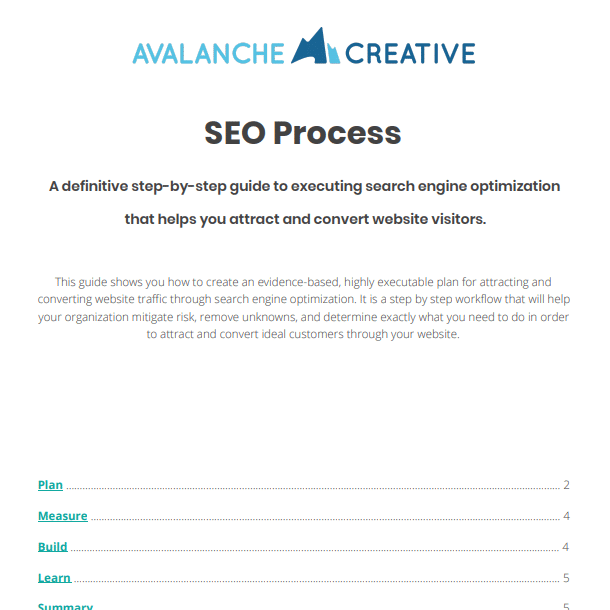Top 10 SEO Best Practices for Content Writing
Category: Search Engine Optimization | Tags: Content Strategy, Digital Marketing, SEO, business ideas
Effective SEO can significantly increase your website traffic—but more importantly, it attracts the right visitors. A strong SEO strategy ensures your site offers helpful, relevant content that brings in potential customers and guides them toward taking action.
Quick SEO Definitions
Search engine optimization (SEO): Improving a website’s ability to rank on Google using keyword research, content writing, link building, and metadata.
SEO content writing: Creating content that informs readers, answers their questions, and includes targeted keywords.
Search empathy: Understanding what searchers want and creating content that meets those needs.
Qualities of Strong SEO Content
Specific Content
Generic content rarely answers the reader’s question or motivates them to engage further. Specific, relevant information is more likely to convert visitors into leads.
Effective Keyword Targeting
To help customers find your website, your content should include long-tail keywords. Longer, more specific search phrases (e.g., “wireless headphones for iPhone”). Long-tail keywords attract visitors who are more likely to take action. Using these terms naturally throughout your content helps improve your Google rankings.
Informative Content
If readers can’t find what they need, they’ll quickly return to Google. High-quality, informative content writing keeps visitors on the page, builds trust, and reinforces your authority in your industry.
Content length: Most pages should aim for at least 1,000 words, with some reaching 1,800+ to fully answer user questions.
Valuable Content
Your website should clearly answer questions, offer context, and provide steps or solutions. High-value content encourages visitors to stay longer, and when users stay, Google takes notice and boosts your ranking.
Does Readability Affect SEO?
Absolutely. If readers struggle to understand your content, Google will, too. Write for a general audience, keep the tone consistent with your brand, and make your content easy to scan. Clear, accurate, trustworthy writing helps both users and search engines.
Top 10 SEO Best Practices
1. Target a Main Keyword
While it is useful to use multiple keywords in your content, you should select a main keyword based on your research. Having a main keyword will help you focus and structure your content, and it will provide a measurable goal. Your objective is to rank that webpage for that keyword; including related keywords is a bonus.
2. Follow Logical Header Structure for SEO
Developing a logical header structure for your content will make your webpage easily scannable for both your reader and Google. Use an H1 header for your main title, an H2 for each section, and H3s for subsections. If you need to further divide your subsections, use H4s or a bulleted list.
3. Incorporate Keywords Naturally
Effectively incorporating keywords in your content is all about placement and balance. You’ll want to use keywords in your main title and in some headers. Then you’ll want to use them in your bulleted lists and body of your text in a way that works with the natural flow of your piece. But you do not want to use your keywords too many times. That is called keyword stuffing, and it will not only cause your content to feel stilted and awkward, but it will also cause Google to rank your page poorly.
4. Use Internal Links
Internal links are hyperlinks in your text that will take the reader to another page on your website. By using them effectively, you will be able to guide the reader to the products they may be interested in or to your website’s contact page.
5. Use External Links
On the other hand, external links will take your visitor to another website entirely. Placing external links to trustworthy websites for government agencies, academic journals, or newspapers will lend your own website credibility in the eyes of Google and your readers.
Be careful not to link to other websites that are competing for the same keyword, and always make sure to have external links open in a new browser tab so the user doesn’t leave your website. Avoid linking to webpages that may change over time to ensure you don’t have to go back and fix it later.
6. Include a Call to Action (CTA)
Every content piece on your website should have a clear call to action directing the reader to take the next step to engage your organization. That next step may include calling your customer service or sales team, filling out a form, subscribing to your email newsletter, or navigating to another page. The call to action should be clear, inviting, and towards the end of your content—after you’ve already convinced them of the value of your product or service.
7. Write Metadata for SEO
A website’s metadata includes the title, description, and URL. Placing keywords and valuable information is important for catching the attention of Google and your reader. Each item also has an ideal length. Page titles should be 50–60 characters, descriptions should be 130–160 characters, and URLs should include five to seven main words (no prepositions, articles, etc).
8. Include Alt Text for Images
Alternative text is a brief description of the image on your page. It will appear if the image fails to load, and a text-to-speech audio version of it will be played if the site visitor is using a screen reader. It makes your webpage more accessible and can help your image rank on the SERP. Be sure not to keyword stuff in your alt text!
9. Look at Competitors per Piece
One of the best ways to understand your reader and develop search empathy with them is to analyze your competitors. Look at the top three to five pages on the SERP for your keyword. Be sure to look at the top results that aren’t placed there by ads, but at the “organic” search results that were ranked highly because of their content. Read over their websites and look for content that is low-quality, short, aimed at the wrong audience, untrustworthy, or slow to load. This will help you figure out how to get a leg up on the competition.
10. Write for Searchers, not Search Engines
At the end of the day, remember that your target audience is not Google, but a potential customer. Before posting your content, make sure it is engaging and flows naturally. Developing a great editing process with people you can rely on for helpful feedback is an important step of the process.
Build Your SEO with Avalanche
If you’re ready to take the next step in building great content for your website, Avalanche Creative would love to talk with you. Our content writers are experts at making informative, engaging, and valuable content for a diverse range of industries.
Share this article:
The Avalanche Email: Fun. Simple. Educational. No Selling.
Learn Result-focused SEO & Content
Join over 2,272+ others who get one email every Wednesday with simple instructions on how to get more website traffic and leads through SEO and content marketing. (Learn more about the email)
Keep Learning
How To Show Up in Gemini (And Win More Local Jobs)
Show up in Gemini when homeowners search for landscaping services. Build the right signals on Google and your website to win more qualified local jobs.
How to Run Google Ads for Landscapers: A Complete Guide
Learn how to set up Google Ads for landscapers, attract qualified leads, and win more local jobs with this step-by-step guide.
🏔️ Watering > Planting New Seeds
Your next marketing win may already be on your site. Learn how to optimize existing pages for better rankings, traffic, and results.
The Recipe vs. The Meal
Your customers buy the experience, not the product. Discover a simple way to shift your message from ingredients to the full meal.
🏔️ Hook, Line, and Sinker 🎣
Use this fishing framework to turn your posts into stories that capture attention, create tension, and inspire action from your audience.
🏔️ Avoid Everything That Doesn’t Move You Forward
Stop chasing shiny tools and refocus on what moves your marketing toward the end zone. Simple steps to cut noise and make steady progress.





